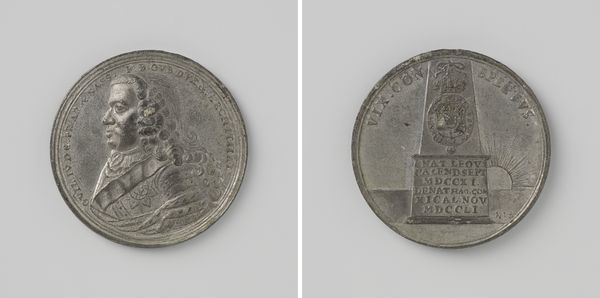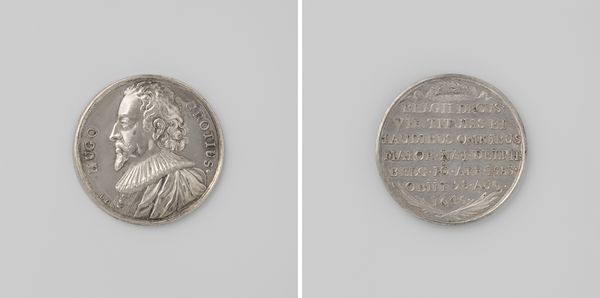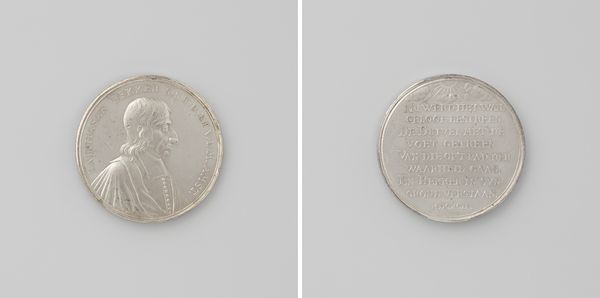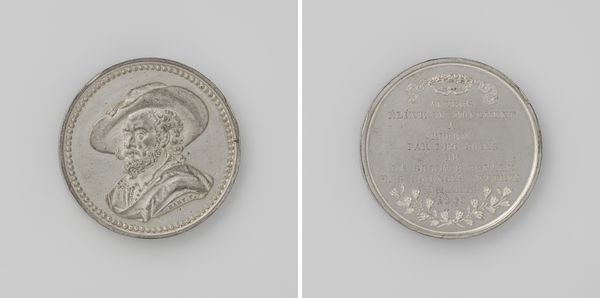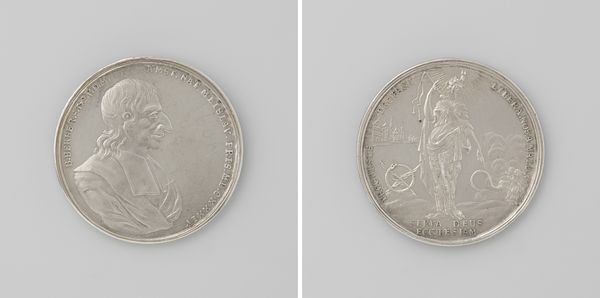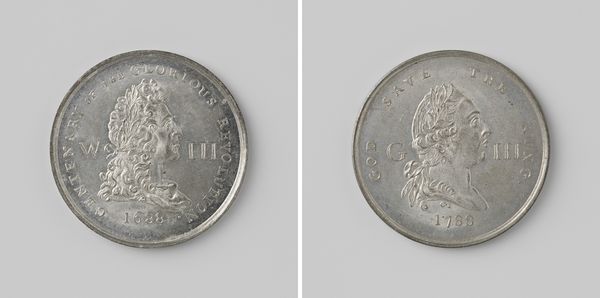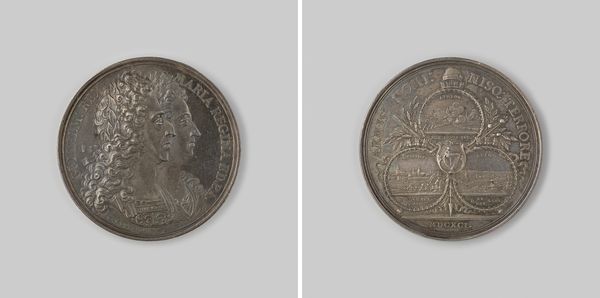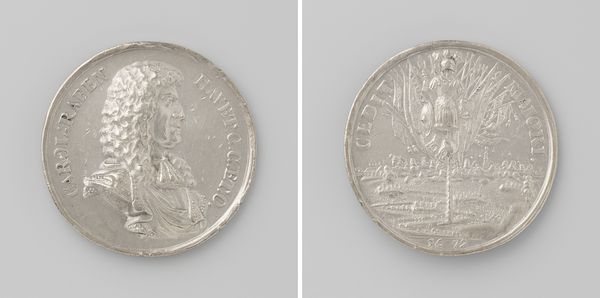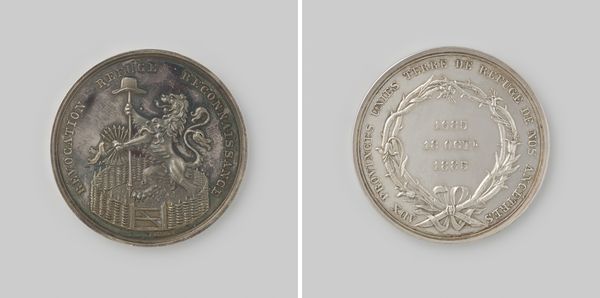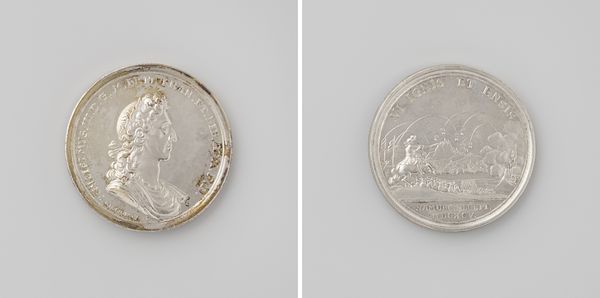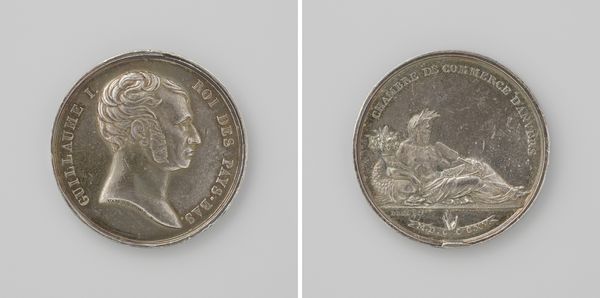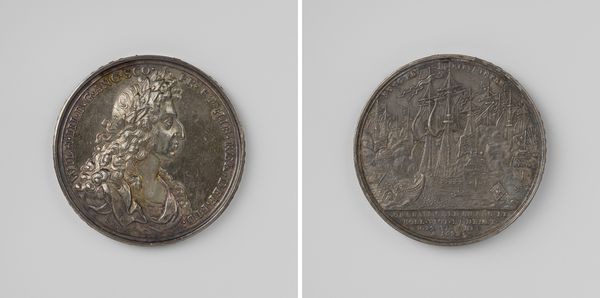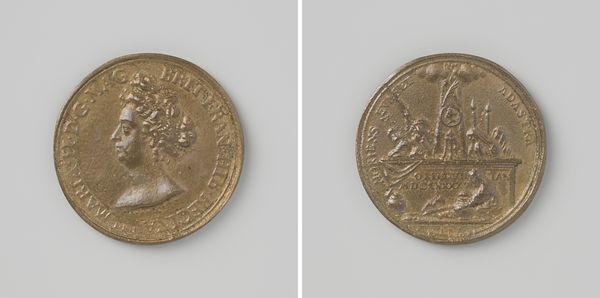
silver
#
portrait
#
medal
#
silver
#
baroque
#
history-painting
Dimensions: length 5.4 cm, width 5.1 cm, weight 55.12 gr
Copyright: Rijks Museum: Open Domain
Curator: The De Witt brothers' murder, captured on a 1672 silver medal. A stark depiction of political violence immortalized through the labor of minting. What strikes you about it? Editor: I'm interested in its dual nature: commemorative object and propaganda. What was the process for making something like this? Curator: We can analyze its material existence and modes of production: silver wasn't equally accessible, dictating who could commission, own, and circulate such objects. Note its small size, making it portable. Consider the silversmith's skill, turning base metal into commentary—a form of directed social messaging, celebrating or condemning depending on who holds it. Can you see how materiality here informs meaning? Editor: It's intriguing how the preciousness of the silver contrasts with the violence it represents, almost like an attempt to ennoble something gruesome. Is the engraving itself a commentary on craft? Curator: The engraving technique becomes part of the narrative, the lines forming portraits or shaping text. Its reproducibility ensured wider circulation of this imagery. Mass production facilitated a broader reach, impacting the understanding of political affairs in this time. Does recognizing its material and mode of production shift how you see its historical context? Editor: Absolutely, knowing about the craft makes me think of who it was created for, how it might have been received, and the social commentary intended. Curator: And the power imbued within it due to the materials used in its creation, labor, and ultimate, lasting legacy. Editor: Definitely! I’ll keep an eye out for the interplay between materials and narrative in future art encounters.
Comments
No comments
Be the first to comment and join the conversation on the ultimate creative platform.
